O desenho científico
TÉCNICAS E APLICAÇÕES
-
 Lilly Ebstein | Clique para ver +
Lilly Ebstein | Clique para ver + -
 Faculdade de Medicina | Clique para ver +
Faculdade de Medicina | Clique para ver + -
 Instituto Biológico | Clique para ver +
Instituto Biológico | Clique para ver + -
 Lette-Verein | Clique para ver +
Lette-Verein | Clique para ver + -
 Técnicas de ilustração científica | Clique para ver +
Técnicas de ilustração científica | Clique para ver +
O desenho era ferramenta fundamental no trabalho das instituições científicas para consolidar um novo conhecimento ou técnica; a ilustração contém informações que o texto por si só não poderia passar e vice-versa.
O trabalho de Lilly era variado, exigia o domínio de diversas técnicas e tinha também utilizações distintas. Há ilustrações em que o detalhe e a precisão da informação científica são fundamentais e é imprescindível identificar visualmente, no desenho impresso, as características, por exemplo, da patologia. Outros são mais esquemáticos, como o texto que indica o diagrama da movimentação da equipe médica em torno do paciente durante uma cirurgia, a maneira correta de segurar os instrumentos e de operar.
No campo da fotomicrografia, há fotografias microscópicas e ilustrações realizadas a partir das imagens vistas ao microscópio. Os desenhos realizados a partir de células examinadas ao microscópio exigia uma complexa tradução, em outra escala, da imagem vista para a desenhada, com o conhecimento prévio de quais os elementos que devem ser destacados para o estudo específico. O domínio da fotomicrografia exigia também um denso conhecimento técnico de lentes e dos processos de revelação e ampliação das imagens em diversos formatos e suportes. No campo da fotografia, há também fotos colorizadas à mão.
O desenho ou ilustração científica, médica e biológica, realizado por Lilly Ebstein Lowenstein era uma ferramenta fundamental do trabalho na Faculdade de Medicina e outras instituições científicas no País e no mundo. Esse desenho não era decorativo ou secundário, mas elemento indispensável da pesquisa, do estudo, do registro documental e didático, das aulas, da publicação científica e da formalização dos procedimentos. O texto e as suas indicações não eram suficientes para consolidar e divulgar o novo conhecimento ou técnica. A ilustração contém informações que o texto por si só não poderia passar e vice-versa.
A qualidade artística dos desenhos estava a serviço da informação científica e tinha como objetivo torná-la mais informativa e didática. Assim, quanto mais apurada a qualidade artística melhor a qualidade de informação científica, já que o objetivo era a clareza e a precisão da informação.
Lilly Ebstein Lowenstein (1897-1966) viveu entre a ciência e a arte, desenhando e realizando fotografias nos campos da medicina e da zoologia. Em seu trabalho, Lilly conjugava o conhecimento técnico da fotografia e do desenho, o estudo das ciências e um notável talento estético. Nascida na Alemanha, ela estudou na Escola Lette-Verein em Berlim entre 1911 e 1914. Em 1925 imigrou com o marido e dois filhos para São Paulo. Em 1926, tornou-se desenhista e fotomicrógrafa da Seção de Desenho e Fotografia na Faculdade de Medicina (USP, a partir de 1934), da qual seria chefe por trinta anos a partir 1932. Entre 1930 e 1935 Lilly foi colaboradora do Instituto Biológico de Defesa Agrícola e Animal, principalmente da sua Seção de Ornitopatologia. Uma vida com arte dedicada à pesquisa e difusão da ciência.



